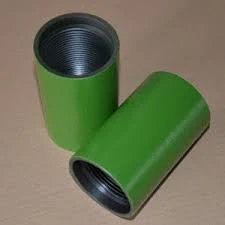- Afrikaans
- Albanian
- Amharic
- Arabic
- Armenian
- Azerbaijani
- Basque
- Belarusian
- Bengali
- Bosnian
- Bulgarian
- Catalan
- Cebuano
- Corsican
- Croatian
- Czech
- Danish
- Dutch
- English
- Esperanto
- Estonian
- Finnish
- French
- Frisian
- Galician
- Georgian
- German
- Greek
- Gujarati
- Haitian Creole
- hausa
- hawaiian
- Hebrew
- Hindi
- Miao
- Hungarian
- Icelandic
- igbo
- Indonesian
- irish
- Italian
- Japanese
- Javanese
- Kannada
- kazakh
- Khmer
- Rwandese
- Korean
- Kurdish
- Kyrgyz
- Lao
- Latin
- Latvian
- Lithuanian
- Luxembourgish
- Macedonian
- Malgashi
- Malay
- Malayalam
- Maltese
- Maori
- Marathi
- Mongolian
- Myanmar
- Nepali
- Norwegian
- Norwegian
- Occitan
- Pashto
- Persian
- Polish
- Portuguese
- Punjabi
- Romanian
- Russian
- Samoan
- Scottish Gaelic
- Serbian
- Sesotho
- Shona
- Sindhi
- Sinhala
- Slovak
- Slovenian
- Somali
- Spanish
- Sundanese
- Swahili
- Swedish
- Tagalog
- Tajik
- Tamil
- Tatar
- Telugu
- Thai
- Turkish
- Turkmen
- Ukrainian
- Urdu
- Uighur
- Uzbek
- Vietnamese
- Welsh
- Bantu
- Yiddish
- Yoruba
- Zulu
api casing sizes
Understanding API Casing Sizes A Comprehensive Guide
When it comes to oil and gas exploration, the importance of the appropriate casing size cannot be overstated. The American Petroleum Institute (API) plays a critical role in establishing industry standards for casing sizes, which are essential components in the drilling and completion of wells. This article delves into API casing sizes, their definitions, significance, and applications in the field.
What is API Casing?
API casing refers to the pipe used to line the borehole during the drilling process. Its primary purpose is to provide structural support for the wellbore, ensure the integrity of the well, and isolate different formations to prevent the mixing of fluids. The casing also offers protection against environmental hazards, such as contamination from surface sources.
API casing is categorized into various classifications based on factors such as material, thickness, size, and intended application. Understanding these classifications is vital for engineers and drilling professionals to choose the most suitable casing for specific drilling conditions and environmental factors.
API Casing Sizes
API casing sizes are standardized and typically measured in inches. The most common sizes of casing utilized in the industry range from 4.5 inches to 20 inches, though there are variations both smaller and larger, depending on the requirements of the well.
1. Production Casing This is the casing that runs from the surface to the bottom of the production zone. The size often ranges from 7 inches to 9.625 inches, depending on the anticipated production capacity and the characteristics of the geological formations being drilled.
2. Intermediate Casing Used primarily for deeper wells, the intermediate casing usually ranges in size from 9.625 inches to 13.375 inches. This casing type helps alleviate issues related to well stability, particularly in challenging geological environments.
api casing sizes

3. Surface Casing This casing protects the freshwater zone and prevents surface contaminants from entering the well. Typically larger, it ranges from 13.375 inches to 20 inches. The selection of surface casing is crucial for maintaining the integrity of shallow formations and ensuring compliance with environmental regulations.
4. Liner A liner is a specialized type of casing that is installed inside the existing casing and does not extend all the way to the surface. Liners usually range from 5 inches to 11.75 inches and are utilized in various situations, such as when there is a need to access deeper formations without disturbing the already installed casing.
Significance of API Casing Sizes
The selection of the correct API casing size is pivotal for several reasons. Firstly, it directly impacts the structural integrity of the wellbore. A casing that is too small may fail under the pressure from surrounding geology or during production, risking a blowout or well collapse. Conversely, oversized casing can lead to unnecessary costs without providing additional benefits.
Secondly, the size of the casing influences the overall drilling dynamics. A properly sized casing can minimize issues like lost circulation and stuck pipe scenarios, which can be costly and time-consuming to resolve.
Lastly, the choice of casing size affects the completion design and production efficiency. The casing size must accommodate the required completion tools, such as packers and sensors, while also allowing for optimum flow rates.
Conclusion
Choosing the correct API casing size is an essential aspect of drilling operations, and it requires careful consideration of various factors, including geological conditions, environmental regulations, and expected production capacities. Understanding the different types of casing sizes and their specific applications can help drilling professionals optimize well performance, reduce risks, and ultimately enhance operational success.
As the oil and gas industry continues to evolve, adhering to API standards for casing sizes remains a fundamental principle guiding the safe and efficient development of hydrocarbon resources. Proper training and knowledge in this area are crucial for anyone involved in the drilling processes, from engineers to field personnel. Being informed about API casing sizes ensures that well integrity is maintained, thereby safeguarding both the environment and operational investments.
-
Tubing Pup Joints: Essential Components for Oil and Gas OperationsNewsJul.10,2025
-
Pup Joints: Essential Components for Reliable Drilling OperationsNewsJul.10,2025
-
Pipe Couplings: Connecting Your World EfficientlyNewsJul.10,2025
-
Mastering Oilfield Operations with Quality Tubing and CasingNewsJul.10,2025
-
High-Quality Casing Couplings for Every NeedNewsJul.10,2025
-
Boost Your Drilling Efficiency with Premium Crossover Tools & Seating NipplesNewsJul.10,2025







